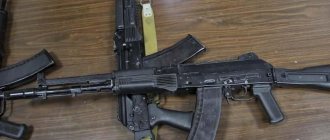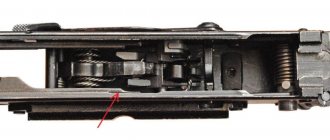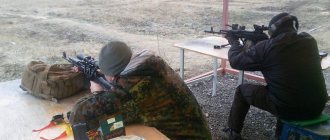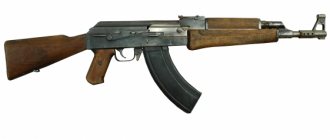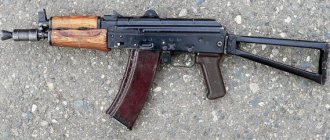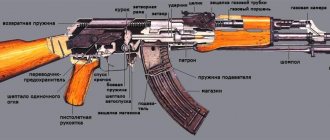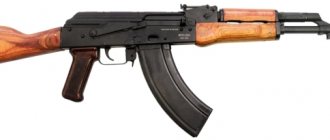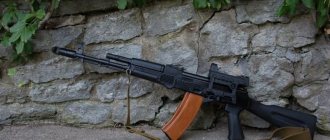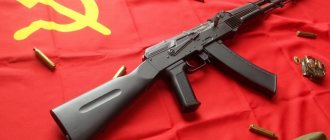Modern structure of the VNA
The modern Vietnamese army consists of three main groups - Main Forces, Local Forces and People's Defense Forces. The branches of the military that are in the structure are ground forces, border forces, naval and air forces and air defense. The navy has divisions - the marines and the coast guard.
The whole country is divided into 9 military districts. Each district includes infantry and artillery divisions, as well as tank brigades and engineering troops. The 2nd Military District - north-west of Vietnam, in addition to the named troops, includes an air defense brigade and defense units of industrial facilities. Two military districts are in the northwest, two in the north, one in Central Vietnam and two in the south of the country. The Capital Defense Command stands out separately. It houses an infantry division, an armored battalion and an artillery regiment.
There are 9 military regions in Vietnam
There are 4 separate parts - these are the cases. They are evenly distributed among the districts. The corps also includes infantry, artillery, tank units and engineering regiments. The buildings have their own names - “Inevitable Victory”, “Fragrant River”, “Central Highlands” and “Mekong Delta”. In connection with the permanent dispute with China over the Paracel Islands, the first two corps are now stationed in the North and in the Hanoi area.
A little history
The first detachment of the Vietnamese army was formed on December 22, 1944 under the command of Vo Nguyen Giap. It numbered only 34 soldiers and had very modest weapons. Over the next few days, he attacked French troops and captured 2 combat posts.
Over the next year, scattered liberation groups joined the detachment. By May 1945, the military unit, which by that time had more than a thousand fighters, became known as the Vietnam Liberation Army. By that time, command training schools were already operating.
Vietnam Liberation Army
The First Indochina War brought invaluable experience and almost complete rearmament. In 1947, the first infantry regiment was formed, and in 1949, the regular troops were renamed and received their current name - the Vietnamese People's Army. Then the conscription procedure for its formation was introduced. In the 50s of the last century, an artillery unit, naval forces, border troops, a tank unit and an air force were successively formed.
Battle Dwarves of Southeast Asia
The vast territories of South Vietnam are literally dotted with underground passages and holes - from very small ones to hide one or two people, to huge multi-level labyrinths tens and hundreds of kilometers long. During the wars, first with the French and later with the Americans, rebel bunkers, weapons and provisions warehouses, living quarters, workshops, hospitals, headquarters, even rooms for party meetings and cinema halls were located here.
Illustration: social networks
The Vietnamese began building underground cities in the second half of the 1940s, when they fought against colonial dependence on Paris. They did not use any equipment - only shovels and hoes. They worked in groups of three or four people: one dug, the other dragged baskets of earth to the vertical entrance shaft, the third lifted the soil up, and the fourth hid it in a secluded place or poured it into the water. This is what the guide told us at the Cu Chi Museum - this is a place near Ho Chi Minh City, where the largest tunnel complex with a total length of up to 250 km (!) is located. Today, a small section of the caves has been turned into an attraction for tourists, but in 1965-1973 it was a powerful base for the Vietnamese communists, where they not only fought, but also lived, gave birth to children and buried their dead.
You can go underground through a vertical shaft with a narrow rectangular hatch (I had difficulty squeezing my 112 cm chest into it, and had to lift my arms up). The entrance shaft ended in a side branch, where during the war the uninvited guest was guarded by partisans with a machine gun.
“Tuan ordered entrance shafts to be dug no more than a meter deep. This will force the American to first lower his feet into the shaft, and only then awkwardly twist to penetrate the connecting tunnel. There, in a small cave, Tuan was already waiting for him. When the Yankees’ soles touched the bottom of the mine, Tuan struck with a bayonet in the groin,” this is how British reporter and writer Tom Mangold .
The average height of the passages is from 80 to 120 cm, the width is from half a meter to a little over a meter. At best, you can walk bent over or move “like a monkey,” touching the floor with your hand. But more often you have to crawl on all fours, and sometimes on your bellies (they say the tunnels have been slightly expanded for tourists). Even in the tourist part of this “subway” it is difficult to breathe - some visitors immediately feel sick and rush to the surface. It’s scary to think how a person feels when he finds himself in labyrinths where there are no excursions.
There are almost no direct passages in Cu Chi - the tunnels are constantly bent at an angle of 60-120 degrees, making it impossible to shoot through the entire length of the corridor. In addition, the bends allow protection from fragments when a grenade explodes. Each corridor ends in a dead end, and, as a rule, somewhere nearby there is a secret door covered with clay, and behind it a hole leading sideways, up or down. Nearby there may be a niche in the wall, where a partisan was hiding behind a thin clay partition with a sharpened bamboo stake - the blow was delivered directly through the wall. Around every turn, a burst of AK fire could be heard, and a grenade could fall from above. There were also mines, tripwires, wolf pits with spikes and stakes, scorpion traps, and snakes suspended from the ceiling. The exits from the tunnels led to hidden firing points, village barns, forest partisan camps - anywhere.
Rat revolver
Meanwhile, the American command set the task of developing weapons specifically for the “Team of Tunnel Rats.” Compact and silent. The first “rat” model was the six-shooter Smith & Wesson M10 model 1899 revolver with a silencer. It used the .38 S&W Special (9.1x29mm), the primary police ammunition for most of the 20th century.
By the way, the small capacity of the M1911 magazine and the M10 drum (7 and 6 rounds, respectively) led to the fact that the Tunnel Rats had an ironclad rule: when meeting an enemy, fire no more than three shots. Otherwise, the enemy may realize that the ammunition is running out or has run out and will rush to attack. It is almost impossible to quickly reload a revolver in a narrow hole. In battle, the one who went first shot, and number two, at the first opportunity, handed him a “fresh” revolver and took him to reload the shot one.
So, the Smith & Wesson M10 revolver. It turned out to be too bulky (up to 29 cm long without a silencer), soldiers complained about the large and inconvenient holster, which made it difficult to climb narrow passages. In addition, the revolver, even with a silencer, fired quite loudly. After all, in almost all revolvers, part of the powder gases breaks into the gap between the barrel and the cylinder, producing a pop. It’s funny, but the low-noise M10 also included earplugs.
The second attempt to create special weapons was made by AAI Inc. and the Aberdeen Proving Ground Operations Research Laboratory. Based on the powerful Smith & Wesson M29 revolver in .44 Magnum caliber, they designed a special “tunnel” revolver, QSPR (Quiet Special Purpose Revolver, silent special purpose revolver). To do this, the long rifled barrel was replaced with a very short smooth one, and the drum was converted to fit the so-called closed-type cartridge.
QSPR - Quiet Special Purpose Revolver, a silent special purpose revolver. Illustration: wikimedia
According to Alexey Ardashev’s “Special, unusual, exotic weapons,” this cartridge was a steel cartridge case with a length of 47.6 mm and a diameter of 13.3 mm. Inside it were a primer, a powder charge, a container with 15 pellets and a piston that pushed this container out. At the same time, the piston itself locked against the protrusions in the muzzle of the cartridge case and locked the powder gases inside. The shot shell left the barrel at a speed of 228 m/s and effectively hit the enemy at a distance of up to 15 meters - more was not required in the tunnels. And there was no flash, and the sound was almost no different from the click when the trigger hit the revolver frame. So, at least, weapons historians write. The QSPR drum was designed for six rounds, the weight of the weapon was 900 grams, and due to the absence of a barrel, the system was very compact. In general, QSPR was considered very successful; it was used with pleasure not only by the Tunnel Rats, but also by the Green Berets during operations in the jungle.
Traps for American soldiers
Vietnamese soldiers turned out to be original in creating traps. This was the only effective way to fight, since the weapons in Vietnam in the initial stages of the conflict were significantly inferior in quality to US weapons. A wide variety of methods were used to combat the occupiers, the following were used:
- Improvised explosive devices;
- Punja's trap is regular and rotating;
- Bamboo Trap;
- Whip Trap;
- Bucket trap;
- Trap with closing sides;
- Trap cartridge;
- Cube-shaped spike traps;
- Standard stretch marks;
- Poisonous snakes;
- Mining;
- Exploding flags;
- Self-firing guns protecting the graves of ancestors.
These are the main Vietnamese traps that became a real nightmare for the American army and its allies. No modern weapons could cope with them, so NATO forces lost soldiers every day without a fight. You can read books about the Vietnam War to learn more about the pitfalls of the guerrillas.
Poisonous "gifts"
In Vietnam, the liberation army often used traps, the main element of which were poisonous snakes. Usually they used bamboo keffiyeh. It is also called the “three-step snake” because its venom acts instantly. This is a small snake that was hung by its tail at face level. When it bites, the body's blood clotting process is disrupted and red blood cells are destroyed.
This poisonous snake was widely used by the Vietnamese in traps
The Vietnamese liberation army soldiers hid such snakes wherever possible: in bags, boxes, tunnels, in empty bamboo stalks. They were also planted on the trails where American troops were supposed to pass.
Minefields
Soviet-made anti-personnel mines were used to mine the villages that had to be abandoned. In addition to villages, large fields were mined where the enemy should or could have been located. Absolutely everything in the villages was mined: weapons, windows, doors, objects that could be of interest to the invaders, and so on.
During war, the symbolic meaning is to remove the enemy flag from the flagpole. But often NATO soldiers blew themselves up. Considering that the fighting was fierce, the first desire after the victory was to remove the flag, which was flying in a prominent place. But when someone started to pull the rope, he pulled the pin out of the grenade and exploded. When his colleagues saw this, they ran up to the exploded soldier. At this moment, a more powerful explosion was heard, which significantly increased the losses of NATO forces.
Protection of graves
Often in Vietnam, traps were set on graves, as the occupiers did not hesitate to avenge their fellow dead. Often a gun was placed in the grave. This trap could have taken one life. They also used a “torpedo”. There were many different types, for example, they installed a shotgun in a coffin. It fired when the lid was opened. Another type of such trap resembled an anti-tank mine in its principle of operation.
Cube with spikes
Such traps were often set during the Vietnam War. It was a small metal cube with spikes. He did not kill, but could neutralize an enemy soldier for a long time. Thus, the leg of the enemy soldier was damaged, and he became helpless. Moreover, two other soldiers were neutralized and were forced to carry the wounded man and his weapon.
Cube with spikes. Trap in Vietnam
About Punja's trap
They were often installed during the Vietnam War near American bases, disguised as a thin layer of grass or soil. In this state it was extremely difficult to detect. It was clearly designed for a human leg and looks like a cube with spikes, but unlike it, the edges were lubricated with various wastes. In this case, the victim not only dropped out of the battle for a while, he received blood poisoning.
Punja's Trap
It is worth noting that such traps had different sizes. Thus, during the Vietnam War, three-meter overturning cubes were used. Once inside, a person died from sharp thorns. Then the cube turned 180 degrees and waited for a new victim. In such cases, Vietnamese partisans could obtain captured weapons for further use against US soldiers.
About the Bamboo trap
This was a great way to get rid of the looters. This trap was installed at the entrance to an abandoned house. When the enemy entered, a stick with spikes was pointed at him. In most cases, such a blow was fatal. The main blow fell on the head or stomach to crush the skull or rip open the insides. The same devices were sometimes used on small jungle paths.
About the whip trap
It also served as a kind of weapon to fight the Americans.
Outwardly, it was a tripwire, but it did not use explosives. So, a bamboo trunk with long stakes was bent and connected to a guy wire. If someone touched the tripwire, they received a powerful blow to the area from the knees to the stomach. Such weapons were rarely lethal, but they reduced the enemy's combat effectiveness and negatively affected the morale of the enemy army.
Bamboo Trap
Bucket trap nightmare
It is somewhat similar to Punji, but it used fish hooks set at an angle. The bucket itself was buried and camouflaged. If an enemy soldier fell into such a trap, he could not get out of it on his own. They had to dig out the bucket and take the victim to the medical unit. If someone tried to get out on their own, the hooks dug into the leg more strongly.
Despite the fact that it is not a lethal weapon, with its help the number of enemy combat-ready soldiers decreased daily. To make it, you needed any bucket and several fishhooks. Simplicity and low cost made it possible to use such a device especially often.
Trap with closing sides
To make it, two boards were fastened with elastic rubber and stretched. Bamboo was inserted between them. Such a structure was installed in a pre-dug hole, at the bottom of which stakes or poisonous snakes could be located. When someone stepped on the bamboo sticks, they fell out and the victim found himself pinned at stomach level.
Snake board
As stated earlier, snakes were often used as lethal weapons during the Vietnam War. The snake board was installed in small reservoirs at the ford site. When someone stepped on a special plate, the other end of the board hit the unfortunate person. Often a poisonous snake was tied to the end by the tail, which, when hungry, bit the first person it met. Thus, one trap could destroy several enemy fighters at once.
"Cartridge"
This is a homemade pressure-action weapon from the Vietnam War, located in a special bamboo container. A variety of cartridges were used here. They dug into the ground, and when they stepped on the plate, they would be shot in the leg or groin. In this case, the wound was not fatal, but required serious treatment.
Trap "Cartridge"
"A pineapple"
A very popular type of trap in Vietnam. It consisted of a grenade or various high-explosive shells disguised as a pineapple. They were hung from a tree or bush. Detonation occurred when the branch was touched. Such a weapon could destroy several people at once. At the same time, it is easy to install and practically safe.
Subordination and hierarchy
The Vietnamese do not have the concept of “Supreme Commander in Chief”. The army is entirely subordinate to the Central Military Commission, which is headed by the General Secretary of the Communist Party. The VNA's charter states that it is under the "absolute, undivided and all-pervasive leadership of the Party." The deputy head of the Central Military Commission is the highest military rank (the only one in the country) - the Minister of Defense.
The Commission also includes the Prime Minister, President, Deputy Ministers of Defense, as well as the head of the Main Political Directorate of the Army, which, in fact, is a separate organization. It is led by the second-highest ranking soldier in the army. In addition, the members of the Commission are the chiefs of general staffs and commanders of military districts.
The Vietnamese Army is subordinate to the Central Military Commission
Military ranks roughly correspond to world armies, but have their own Vietnamese name. The last such rank is colonel. After it, the rank names correspond to the generally accepted ones - senior colonel, junior, middle, senior and great general. There is only one great man in the country and that is the Minister of Defense. All units have a political commissar, who is equal in rank to the commander.
The term of service in the VNA is 2 years. Today, girls can also serve in the army. Defense spending in Vietnam is 5% of GDP.
